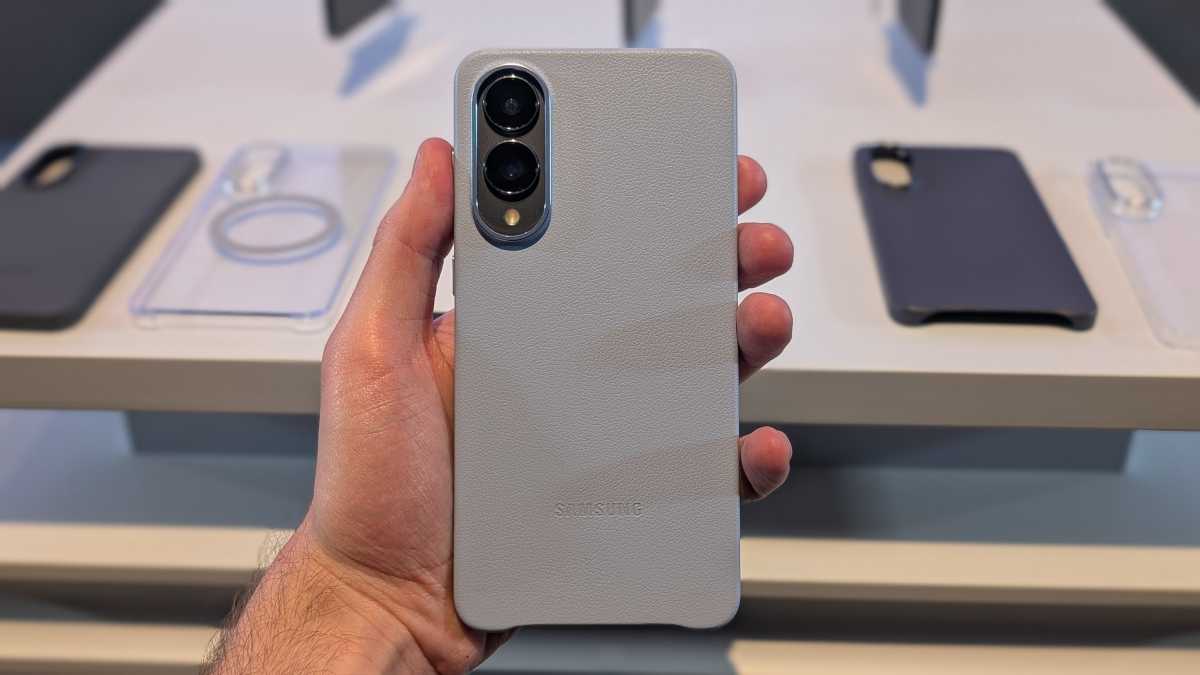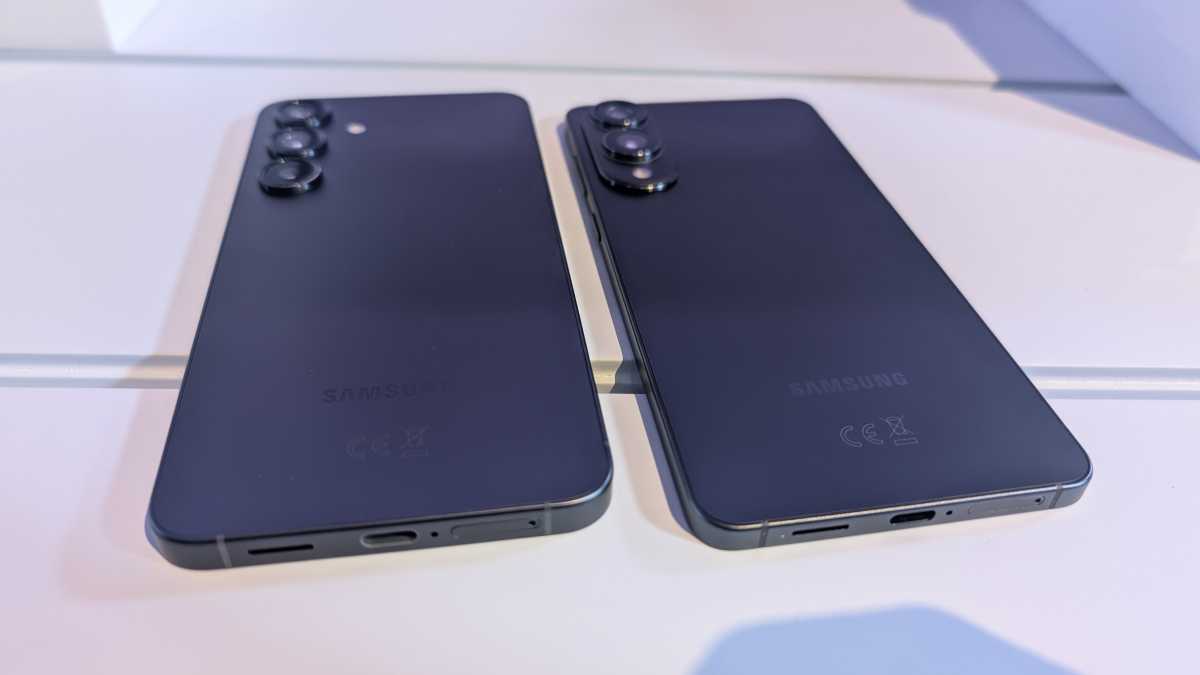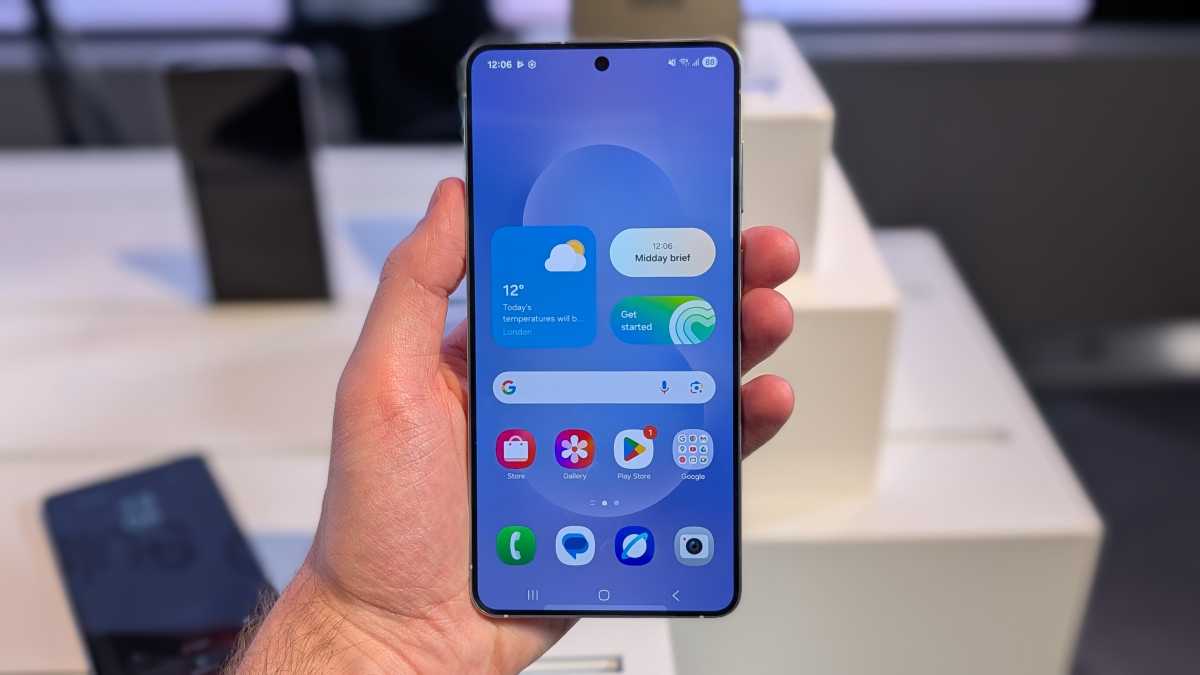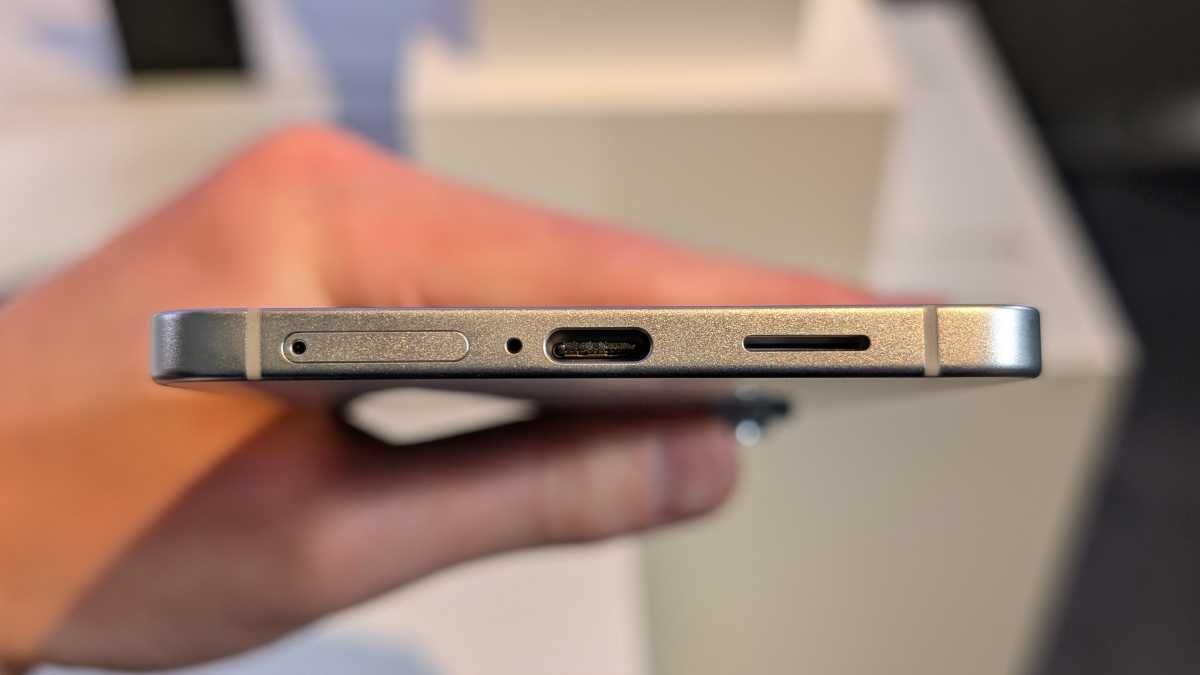Four months after it was teased, the Samsung Galaxy S25 Edge is finally here. It marks Samsung’s first Edge phone in almost a decade (in a very different sense) and has already made headlines for its ultra-slim design – at just 5.8mm, it’s one of the thinnest smartphones ever made.
Before trying the device for myself, I was excited to see just how slim it felt. But after some hands-on time with the S25 Edge, another characteristic ended up being much more impressive.
It was something I immediately noticed when I picked up the phone
Light, but not Lite
The Samsung Galaxy S25 Edge weighs just 163g, meaning it’s also one of the lightest phones on the market. With many modern handsets exceeding 200g, this is a significant and refreshing shift in thinking.
It was something I immediately noticed when I picked up the phone.
The S25 Edge feels remarkably light, to the extent that you could quickly forget about it being in your pocket. Given the device has a sizeable 6.7-inch display, it’s remarkable what Samsung has been able to achieve here.
But won’t applying a case defeat the point of such a light chassis? Luckily, I didn’t have to wait long to find out. Samsung was also showing off a range of its official cases at the event, which manage to add crucial extra protection without adding much in the way of noticeable bulk or weight.

Anyron Copeman / Foundry
However, while I wouldn’t recommend it, the S25 Edge is durable enough to be used case-free. Just like the S25 Ultra, the device is equipped with a tough titanium frame. And it’s the first phone to use Corning’s Gorilla Glass Ceramic 2 on the display, which promises “enhanced crack protection”.
The only real cause for concern would be the glass back, but it didn’t exactly feel fragile on the Galaxy S25+ that I reviewed. Comparing the two phones side-by-side, the difference in weight and thickness is stark.

Anyron Copeman / Foundry
No compromises? Not quite
Another thing that really impressed me about the S25 Edge is how few compromises have been made to achieve the thin and light design.
The phone has a lot in common with the Galaxy S25+, including the exact same 6.7-inch, 120Hz AMOLED display that still looks gorgeous. The Snapdragon 8 Elite for Galaxy chipset ensures performance is still top-notch, while Samsung has managed to squeeze the Galaxy S25 Ultra’s excellent 200Mp main camera into this much thinner phone.
a few key sacrifices have been made

Anyron Copeman / Foundry
It’s just as impressive on the software side, with One UI 7 including all of Samsung’s existing Galaxy AI features. You also get a full seven years of OS and security updates, which remains the joint-best commitment on any phone, along with Google Pixels.
In many ways, it feels like you’re getting the full Samsung smartphone experience in a handset that just happens to be incredibly thin and light.
However, a few key sacrifices have been made.
The S25 Edge has just a 3900mAh battery capacity, which is very small by modern standards. For context, the S25+ has a 4900mAh battery – that’s over 25% bigger.
It’s a case of lithium graphite technology here, not silicon carbon (SiC), which we’re seeing pop up in phones like the OnePlus 13, enabling a higher capacity in the same physical space.
Samsung claims you can still get up to 24 hours of video playback on a single charge, but how does that translate to real-world usage? Until I get the chance to test properly, there’s no way of knowing, but it’s a big worry for sure.
It doesn’t help that the company’s so-called “super fast charging” is limited to just 25W, while the S25+ and S25 Ultra can hit 45W – perhaps because the slender design can’t handle the heat involved.
There was lots of talk about the USB-C port and other parts on the bottom side of the phone being ‘wonky’ but the off-center placement didn’t bother me.

Anyron Copeman / Foundry
Then there’s the complete lack of any telephoto lens. Shots from the main lens should be just as good as the S25 Ultra, but it’ll fall well short when it comes to zoom shots.
Samsung says that photos using the 2x digital zoom are comparable to optical quality, which is true. But most phones at this price offer 3x optical or more. It speaks volumes that even the digital zoom tops out at 10x.
The S25 Edge’s 12Mp ultrawide is apparently slightly better than the one on the Galaxy S25+, enabling detailed macro photography. But if you care about zoom photos, this isn’t the phone for you.
About that price…
The small battery and lack of telephoto lens are brought into sharp focus (pun intended) by the Galaxy S25 Edge’s price.
In the UK, it starts at £1,099 for 256GB of storage, while the 512GB model will set you back £1,199 (US pricing TBC). You can pre-order one from the Samsung website now, ahead of the phone being released on 30 May.
That starting price is £100 more expensive than the S25+ and only £50 less than the S25 Ultra, making it hard to justify.
Unless you really want a super thin and light phone, there are likely to be better options elsewhere. However, there’s no denying that the S25 Edge’s design is an impressive achievement, and I’m hoping for more positive surprises with extended usage.
Look out for our full review of the Galaxy S25 Edge soon. In the meantime, check out our guide to the best phones you can buy to see what it’s up against.



